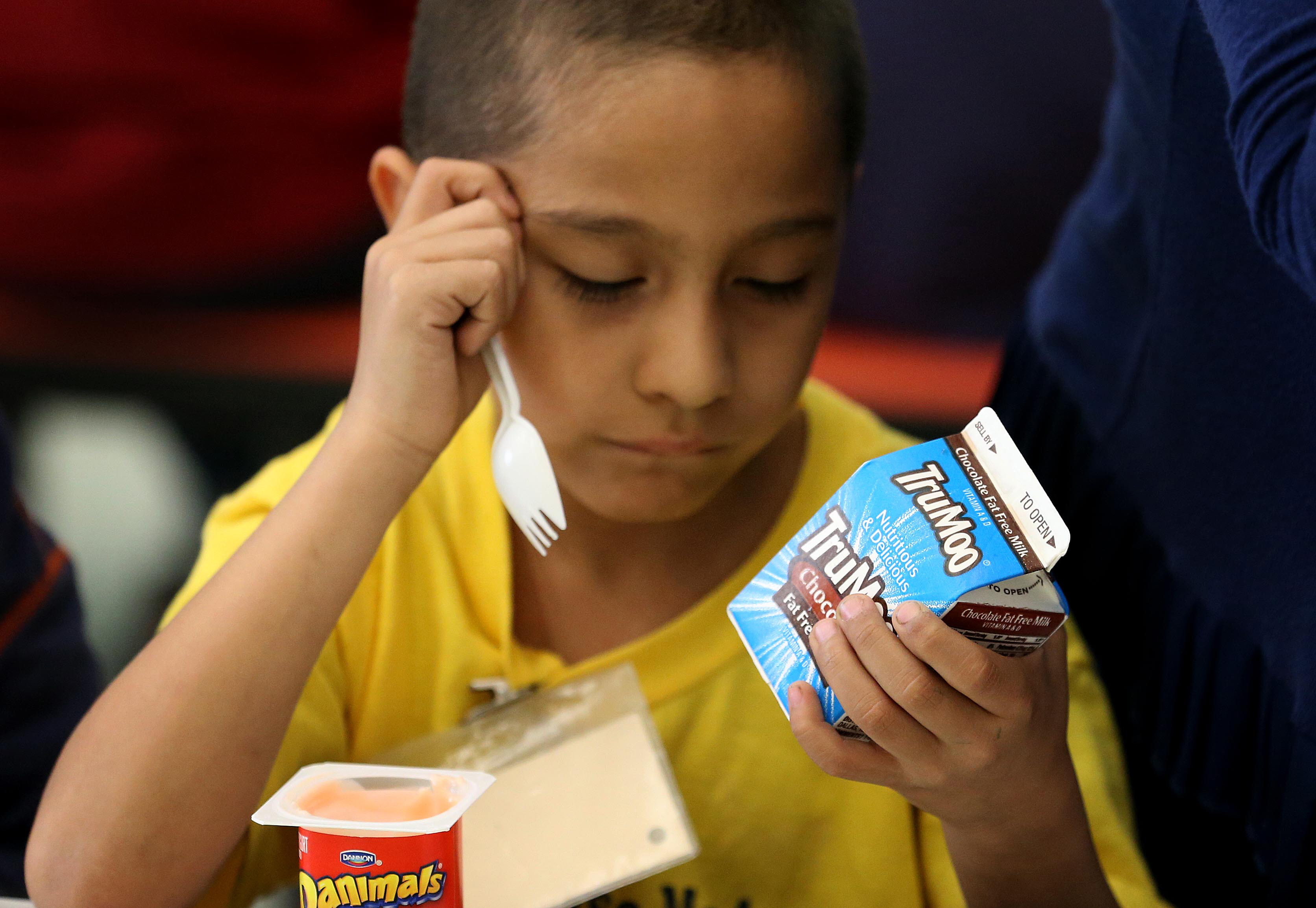
Whether students like it or not, proper nutrition provides them the chance to grow and develop. School breakfasts and lunches should supply required nutritional values for a healthy lifestyle. However, President Donald Trump wants to roll back provisions and provide students with less healthy meals.
It is essential that nutritional levels in school breakfasts and lunches remain healthy because they provide students in need with updated healthy meals, fulfill nutritional needs and cause mental development which leads to academic success.
During the Obama presidency, First Lady Michelle Obama devoted her career to implementing healthier foods in cafeterias during her Let’s Move! campaign. The Healthy Hunger Free Kids Act, implemented in 2010, provides more students free and reduced lunch through household income data provided through Medicaid, offers improved services to struggling kids, such as providing more meals to at-risk students and improving methods to make access to lunches easier, and allows the United States Department of Agriculture to increase food standards and nutritional value to school-provided meals.
Not only does the act provide nutritional services, but allows students in need the opportunity to eat more nutritious meals. According to Orange County Public Schools Food and Nutrition Services, any school that has 80 percent of students on free and reduced lunch status offer breakfast at no charge, and any school that has 95 percent of students on free and reduced lunch status offer breakfast and lunch at no charge. Currently, 24 schools provide both breakfast and lunch at no charge, while 45 schools provide breakfast at no charge in Orange County.
This local data reflects a nationwide trend of assisting families who may not have access to proper food groups. According to the National Center for Children Poverty, 21 percent of students live in families below the poverty income line. The Healthy Hunger Free Kids Act provides financially struggling students the opportunity to not only eat a full meal, but a well rounded one on a national scale. Rolling back this legislation would delineate the opportunity for economically disadvantaged students.
Students who eat school lunches need improved nutrition because of obesity. With nearly one-third of U.S. citizens dealing with obesity, healthier lunches could help end this trend. According to the USDA, examples of better dieting at school include reducing sodium content, offering fruits and vegetables as two separate meal components, offering vegetables daily at lunch, including specific vegetable subgroups weekly, such as legumes and dark greens and preparing meals using ingredients that contain zero grams of trans fat per serving.
These requirements regulate schools in providing students with a balanced food pyramid. Continuing this would help students find their proper balance between all of the food groups.
Additionally, encouraging healthier habits at school translates to improved academic performance. The University of Alberta conducted the Children’s Lifestyle and School-performance Study. Of the 4,589 fifth grade participants, it which found that the most academically successful students were ones that ate an adequate amount of fruit, vegetables, protein and fiber and less calorie intake from fat.
According to Wilder Research, students who eat more fast food seem more susceptible to illnesses such as headaches and stomach aches which causes them to miss more school, decreasing their likeliness to perform well on standardized tests. Fast foods tend to have increased amount of sodium, on average, ranging from 15 to 40 percent of daily recommended intake. If these numbers reflect the amount of sodium that could be put into school lunches, students will feel physically ailed throughout the day.
Dissenters to healthier breakfasts and lunches state that students do not enjoy the food. However, this idea only reflects upon the eating trends and habits at home. If parents do not encourage healthy habits, kids will not attempt at eating proper foods outside of the home. As Howell Wechsler, CEO of the Alliance for a Healthier Generation, stated, “we would not lower standards for reading, writing and arithmetic just because students found them challenging subjects, and we should not do it for school nutrition either.”
If schools continued to encourage the need for improved health standards and to make healthier foods desirable, students would enjoy finding a better balance. Rolling back this legislation proves detrimental to those who need these improved meals. The currently implemented legislation provides equal opportunities to food access, allows students proper nutritional needs and accelerates academic performance.
